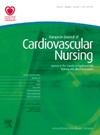The associationof quality of life and the functioning in the chronic disease among patients after myocardial infarction
IF 3.9
3区 医学
Q2 CARDIAC & CARDIOVASCULAR SYSTEMS
引用次数: 0
Abstract
Background The importance of health-relatedquality of life (HRQoL) and improving functional status in reducing risk factors of myocardial infarction (MI) has also been increasingly recognized. Purpose This study aimed to examine the level of quality of life (QoL) in patients after myocardial infarction (MI) in relation to the degree of functioning in chronic disease. Methods This was a cross-sectional, single-centre study. The study was conducted among 231 patients who were hospitalized for myocardial infarction (MI) after percutaneous coronary intervention (PCI). The WHO Quality of Life Questionnaire (WHOQOL BREF) andthe Chronic Disease Functioning Scale(FCIS) were used. Results The Spearman's correlation coefficient showed a statistically significant correlation (coefficient value 0.5 < |r/rho| ≤ 0.7) between general functioning in chronic disease and the average QoL (rho = 0.56;p < 0.001)and somatic QoL levels(rho = 0.52;p < 0.001), as well as a moderately strong positive correlation with the QoL level on the psychological domain (rho = 0.50;p < 0.001), social domain (rho = 0.48;p < 0.001) and environmental domain (rho = 0.43;p < 0.001). Conclusion Identifying the chronic disease functioning indicator in post-MI patients in relation to HRQoL allows for targeted counseling and secondary prevention of ischemic heart disease (IHD), which translates into a reduced risk of further cardiovascular events and related rehospitalization.心肌梗死患者的生活质量与慢性病功能的关系
背景 健康相关生活质量(HRQoL)和改善功能状态对降低心肌梗死(MI)风险因素的重要性也日益得到认可。目的 本研究旨在探讨心肌梗死(MI)后患者的生活质量(QoL)水平与慢性疾病功能程度的关系。方法 这是一项横断面单中心研究。研究对象是经皮冠状动脉介入治疗(PCI)后因心肌梗死(MI)住院的 231 名患者。采用了世界卫生组织生活质量问卷(WHOQOL BREF)和慢性病功能量表(FCIS)。结果 斯皮尔曼相关系数显示,慢性病患者的一般功能与平均 QoL(rho = 0.56;p < 0.001)和躯体 QoL 水平(rho = 0.52;p < 0.001),以及心理领域(rho = 0.50;p < 0.001)、社会领域(rho = 0.48;p < 0.001)和环境领域(rho = 0.43;p < 0.001)的 QoL 水平呈中度正相关。结论 确定心肌梗死后患者的慢性病功能指标与 HRQoL 的关系,可提供有针对性的咨询和缺血性心脏病(IHD)的二级预防,从而降低进一步心血管事件和相关再住院的风险。
本文章由计算机程序翻译,如有差异,请以英文原文为准。
求助全文
约1分钟内获得全文
求助全文
来源期刊

European Journal of Cardiovascular Nursing
CARDIAC & CARDIOVASCULAR SYSTEMS-NURSING
CiteScore
5.10
自引率
10.30%
发文量
247
审稿时长
6-12 weeks
期刊介绍:
The peer-reviewed journal of the European Society of Cardiology’s Council on Cardiovascular Nursing and Allied Professions (CCNAP) covering the broad field of cardiovascular nursing including chronic and acute care, cardiac rehabilitation, primary and secondary prevention, heart failure, acute coronary syndromes, interventional cardiology, cardiac care, and vascular nursing.
 求助内容:
求助内容: 应助结果提醒方式:
应助结果提醒方式:


